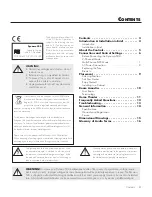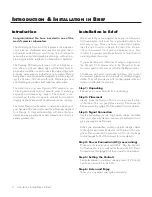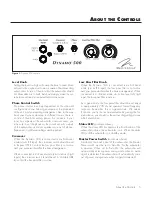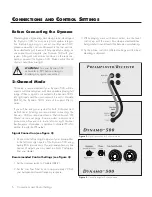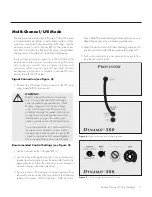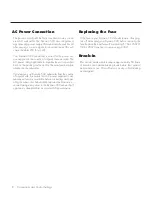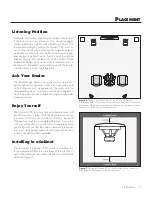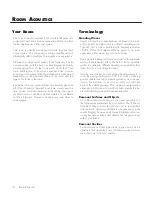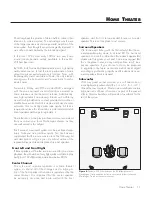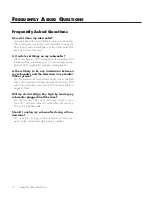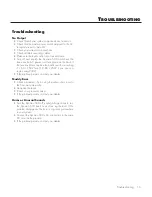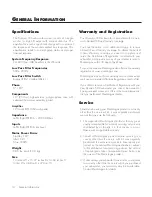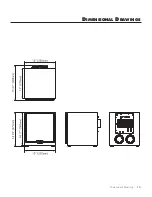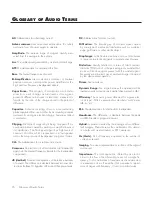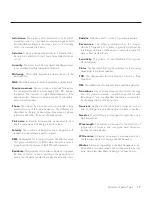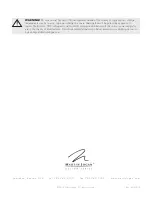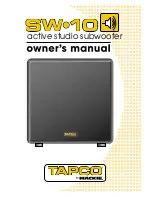
Terminology
10 Room Acoustics
This is an area that requires both a little background to
understand and some time and experimentation to attain
the best performance from your system.
Your room is actually a component and an important part
of your system. This component is a large variable and can
dramatically add to or subtract from a great sonic experience.
All sound is composed of waves. Each frequency has its
own wave size, with the lower, or bass frequencies literally
encompassing from 10 feet to as much as 40 feet. Your
room participates in this wave experience like a swim-
ming pool with waves reflecting and becoming enhanced
depending on the size and shape of the room and the
types of surfaces in the room.
Remember that your audio system can actually generate
all of the information required to recreate a sonic event in
time, space, and tonal balance. Acoustically, the role of
an ideal room would be to neither delete nor contribute
to that information. However, nearly every room does to
some degree.
Standing Waves
Sound coming from a speaker bounces around in a room
until a pattern emerges—this is called a standing wave.
Typically, this is only a problem with frequencies below
100Hz. When this happens different parts of your room
experience either an excess or a lack of bass.
Some people believe that having a room without parallel
walls will eliminate this effect. The truth is that non-parallel
walls only generate different standing wave patterns than
those that occur in rectangular rooms.
Usually, you can excite most of the standing waves in a
room by putting the Dynamo 500 in a corner. Listening
position determines which standing waves you will expe-
rience. For instance, if you sit in a corner you will hear
most of the standing waves. This can be an overpowering
experience. Sitting next to a wall can also intensify the lev-
els of the standing waves that are experienced.
Resonant Surfaces and Objects
All of the surfaces and objects in your room are subject to
the frequencies generated by your system. Much like an
instrument, they will vibrate and "carry on" in syncopation
with the music, and may contribute in a negative way to the
sound. Ringing, boominess, and even brightness can occur
simply because surfaces and objects are "singing along"
with your speakers.
Resonant Cavities
Small alcoves or closet type areas in your room can be
chambers that create their own "standing waves" and can
drum their own "one note" sounds.
r
oom
a
CoustICs
Your Room



